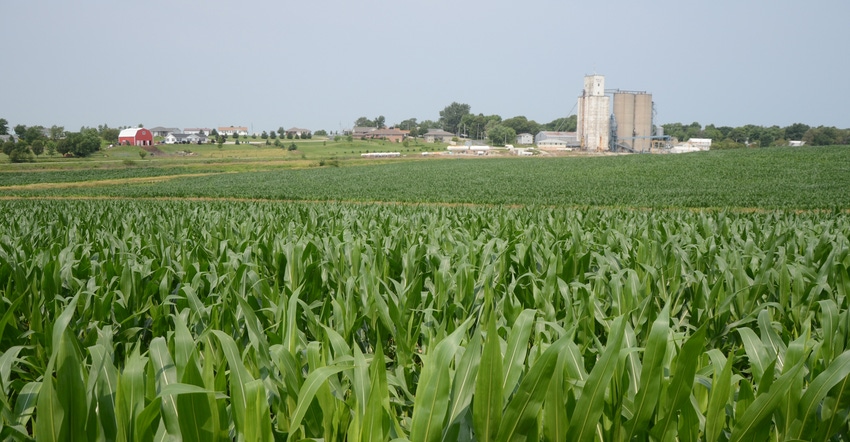June 7, 2021

For whatever reason, there are things in the air that have a little different feel this summer. Is that feeling from the slow start to the growing season caused by the unusually cool, dry weather throughout April and May? Is it grain prices at near record highs — and the desire to take advantage of them? Is it the prospect of incredible profit potential, if we are able to grow an average or average-plus crop? Maybe it's the various federal tax proposals that hold the potential to levy massive and painful implications on farm families and farm assets? Or, could it simply be a hangover, of sorts, from the disrupted pandemic and election year that was 2020? Whatever "it" is, things feel just a little different right now.
The same could be said for the Iowa farmland market — something feels different, because farmland values have moved sharply stronger. As a result, I've been getting questions about why the market is moving the way it is, and what's driving it. My response? It is rare that most, if not all, of the factors influencing land values line up in a positive fashion. But that's what has happened.
For one, the potential for profit with strong grain prices, is really significant — and this is a huge difference from recent years. Second, for anyone needing or wanting to borrow money to purchase a farm, credit has rarely been more readily available at a lower borrowing cost. Third, the laws of supply and demand are clearly in play, with fewer farms available to purchase than the current demand to purchase them, thereby creating an updraft in prices as people compete for scarce resources.
Finally, the potential for inflation has again entered our discussions. Because farmland has proven to be a long-term winner during inflationary times, there have been more than a few new entries into the farmland market that are a bit more investor-oriented (e.g., farmland funds, crowd funding, etc.). No doubt, this land market is running right now — and that is what feels different.
All that said, an important question to consider is whether the running market has legs to keep running. While I do not want to be a wet blanket, I do think it is important to acknowledge that every market has cycles, and something will eventually break the current cycle.
Will China's buying patterns shift again? Will there be a future move away from the ethanol mandate? What might happen if there is no longer a step-up in basis on inherited assets — will aging owners more regularly move to sell their farms before their death? We simply need to acknowledge and understand that we do not live in a static world.
So, while the sales below reflect a farmland market that feels different and continues to adjust higher, there is no certainty to how far or long that might continue. Stay tuned.
Northwest
Palo Alto County. 80 acres southwest of Ayrshire recently sold at public auction for $11,800 per acre. The farm consisted of 78 tillable acres with a corn suitability rating 2 (CSR2) of 79.1, and equaled $153 per CSR2 point on the tillable acres.
North central
Cerro Gordo County. 149 acres near Clear Lake recently sold in a sealed-bid sale for $9,100 per acre. The farm consisted of 144 tillable acres with a CSR2 of 63.2, and equaled $149 per CSR2 point on the tillable acres.
Northeast
Buchanan County. 40 acres northeast of Independence recently sold at public auction for $12,700 per acre. The farm consisted of 37 tillable acres with a CSR2 of 85.3, and equaled $161 per CSR2 point on the tillable acres.
West central
Sac County. 202 acres north of Lytton recently sold for $9,463 per acre. The farm consisted of 196 tillable acres with a CSR2 of 81.0, and equaled $120 per CSR2 point on the tillable acres.
Central
Story County. 80 acres northwest of Maxwell recently sold for $7,965 per acre. The farm consisted of 79 tillable acres with a CSR2 of 71.5, and equaled $113 per CSR2 point on the tillable acres.
East central
Johnson County. 145 acres southeast of Iowa City sold for $12,250 per acre. The farm consisted of 140 tillable acres with a CSR2 of 85.1, and equaled $149 per CSR2 point on the tillable acres.
Southwest
Taylor County. 214 acres near Bedford recently sold for $5,065 per acre. The farm consisted of 191 tillable acres with a CSR2 of 60.6, and equaled $94 per CSR2 point on the tillable acres.
South central
Marion County. 153 acres east of Milo, recently sold at a public online auction for $6,100 per acre. The farm consisted of 145 tillable acres with a CSR2 of 65.5, and equaled $98 per CSR2 point on the tillable acres.
Southeast
Henry County. 76 acres north of Mount Pleasant recently sold at a public online auction for $13,750 per acre. The farm consisted of 76 tillable acres, with a CSR2 of 84.7, and equaled $162 per CSR2 point on the tillable acres.
Hensley is president of Hertz Real Estate Services, which compiled this list, but not all sales were handled by Hertz. Call Hertz at 515-382-1500 or 800-593-5263, or visit hertz.ag.
About the Author(s)
You May Also Like






